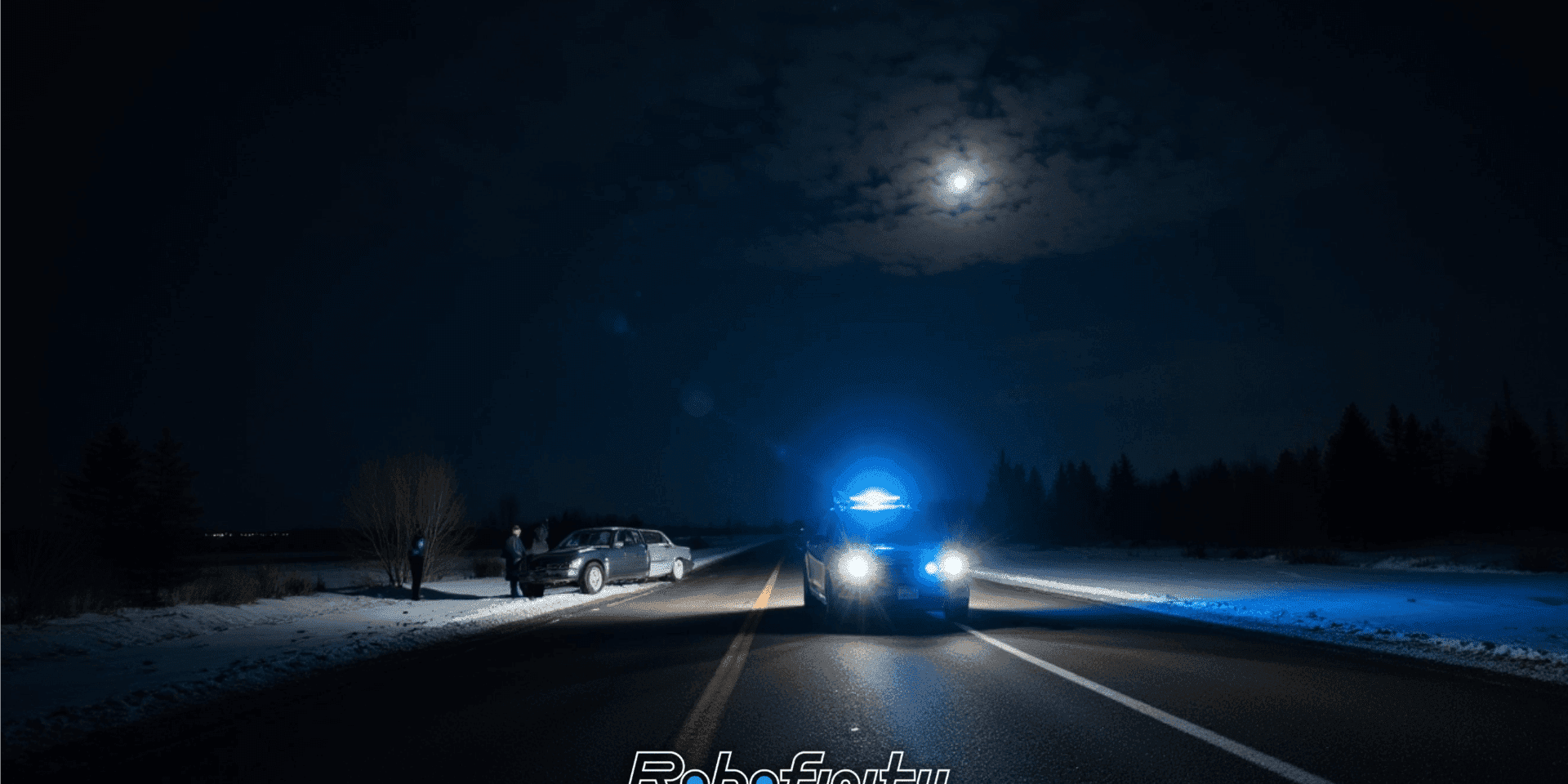It was just after 9 PM on a cold October night on a remote stretch of Highway 11 in central Saskatchewan.
An RCMP unit was responding to a 911 call about a disabled vehicle. The sky was black, a light snow was falling, and the wind was picking up. Visibility was already poor — and getting worse.
They passed the scene — and didn’t see it.
“We radioed in: ‘No vehicle in sight,’” recalls one officer. “Ten minutes later, another unit found the car — over 300 meters back. A driver and passenger had been standing in the snow for nearly half an hour.”
They were lucky. No one was injured. But the realization hit hard: they’d missed them completely.
“I still think about it,” the officer says. “We were alert, we were trained, we were following protocol — but the snow and darkness made them invisible. We didn’t just miss a call. We missed people.”
❄️ The Hidden Dangers of Prairie Night Response
Saskatchewan’s vast, open landscape is one of the most challenging environments in Canada for emergency response.
- No streetlights for hundreds of kilometers
- Early snow and blowing drifts reduce visibility to zero
- Dark clothing blends into the night
- Stranded vehicles are often off the shoulder, invisible until impact
And with over 60% of Saskatchewan’s population living outside urban centers, first responders are constantly driving long distances in extreme conditions.
“On the prairies,” says a senior operations lead, “you’re not just fighting the weather. You’re fighting invisibility.”
The Turning Point: A Department-Wide Search for Better Vision
After the incident, the detachment launched an internal review of night-response capabilities.
“We have radios, sirens, GPS — but we didn’t have a way to see what was ahead,” says a fleet safety coordinator. “We tested spotlight systems. We upgraded headlights. But nothing worked in snow or fog.”
Then they discovered Robofinity InsightDrive™.
“I didn’t expect much,” admits one officer. “But during a demo, we spotted a volunteer standing 200 meters off the road — in a white jacket, in falling snow. My partner said, ‘That’s impossible.’ But InsightDrive™ saw him.”
Business Impact: Safer, Smarter, Faster Response
The unit piloted InsightDrive™ on five cruisers. Within three months:
- Response time to roadside incidents dropped by 22%
- Near-miss reports fell to zero
- Officers reported higher confidence during night patrols
“It’s not just about finding people,” says a public safety manager. “It’s about avoiding collisions. We’ve had cruisers hit deer, livestock, even abandoned vehicles. InsightDrive™ gives us eyes before headlights fail.”
Now, multiple detachments across central and northern Saskatchewan are evaluating fleet integration.
Why Prairie Emergency Services Need Smarter Vision
Saskatchewan’s unique conditions make traditional lighting ineffective:
- Open terrain with no ambient light
- Early winter snow that reflects and distorts beams
- High-speed highways where reaction time is critical
- Wildlife crossings that increase in fall and winter
InsightDrive™ doesn’t rely on visible light — it detects heat signatures, allowing it to identify people, animals, and vehicles up to 656 feet (200 meters) ahead, even in total darkness, snow, or fog.
The Bottom Line: When Seconds Count, You Can’t Afford to Miss
For the officers involved, the lesson was clear:
“Technology isn’t a replacement for training. But in the prairie dark, it’s the difference between finding someone — and driving past them.”
The unit now advocates for InsightDrive™ across rural detachments.
“If we can save one family from freezing on the side of the road, it’s worth it.”
Learn more about how InsightDrive™ supports emergency services
Request a business consultation for public safety fleets








